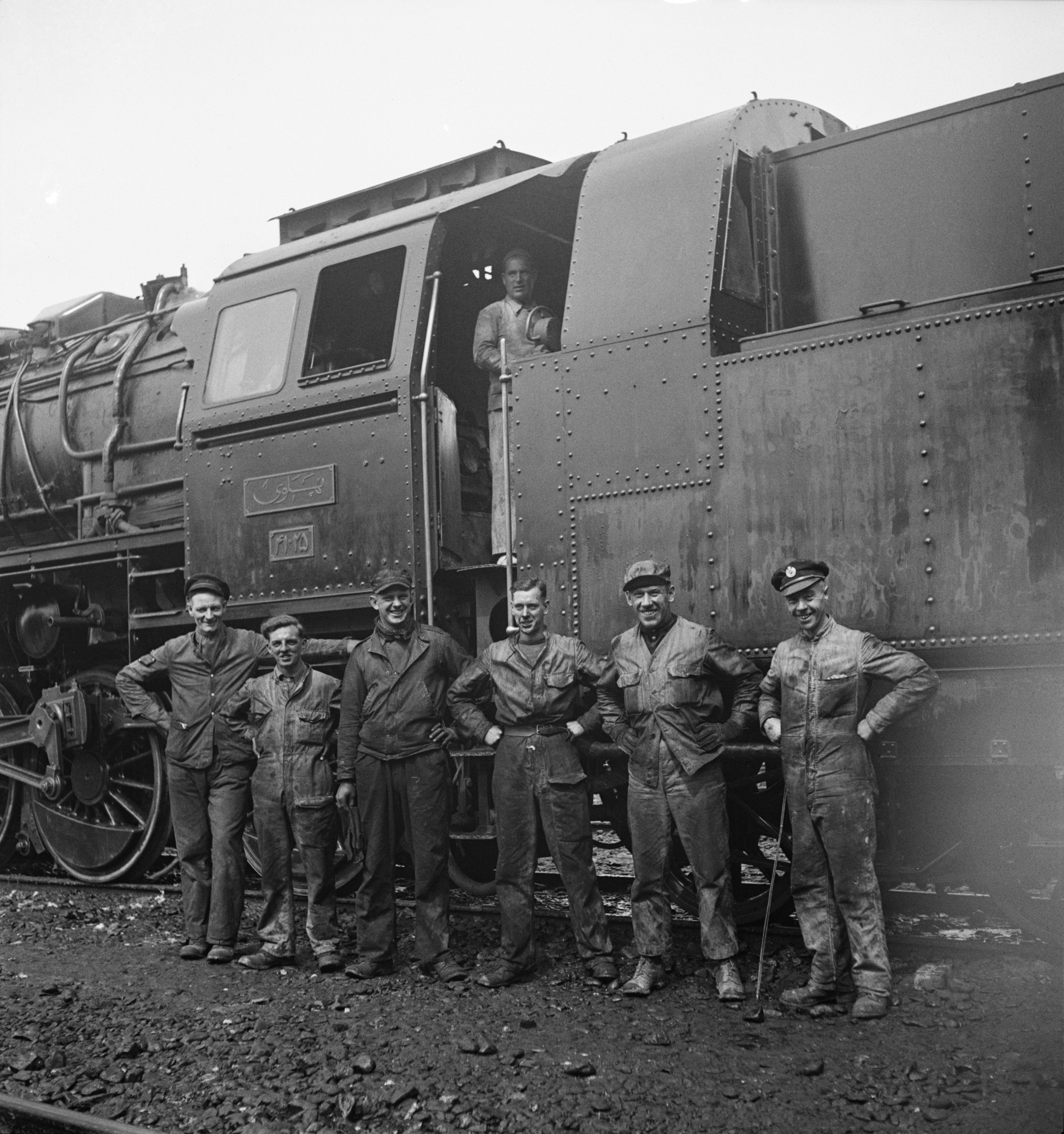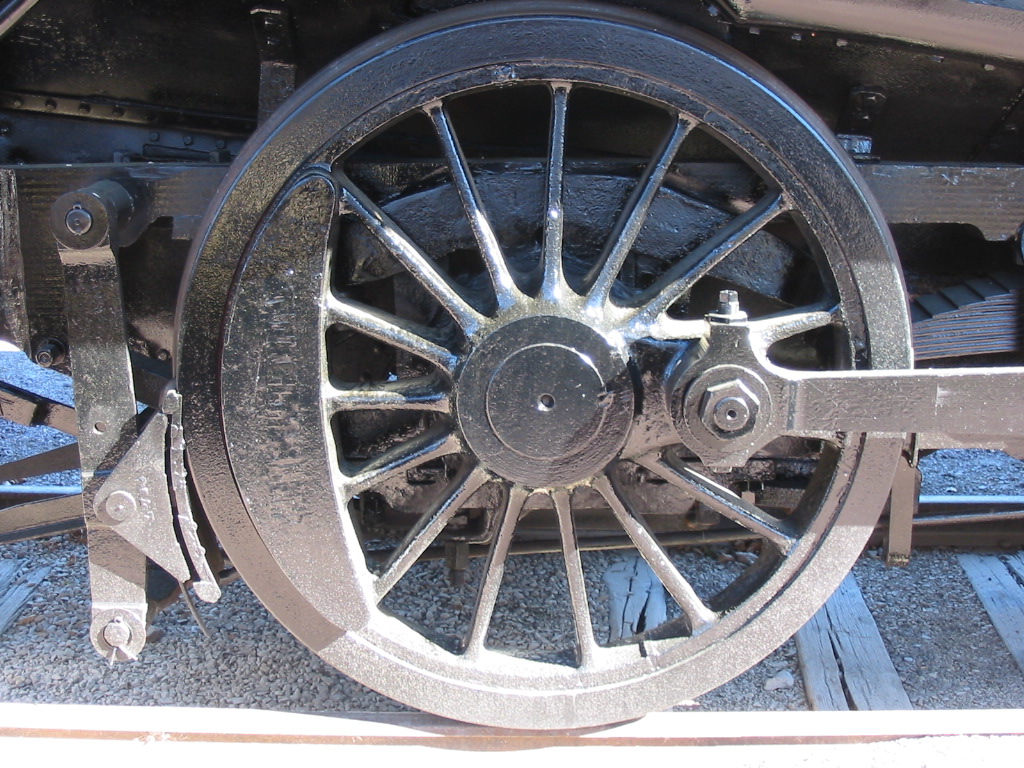|
Matrai
MATRAI is the sum of abbreviations of RAI (Islamic Republic of Iran Railways ) and MAT (research center) and means Iran Railway Research Center profile: The Railway Research Center (MATRAI)is research department of Iranian Railways. Besides The main activities of doing railway related research projects and development, it is a key consultative body for railway senior directors. MATRAI has other activities, such as; keeping a close relation with state and aboard universities and research centers; supporting university thesis; establishing technical seminars and conferences over the railway field; offering technical services through its enrich technical documents center. Goals: 1. Railway research development in passenger and freight traffic 2. Establishing the proper base for upgrading the railway research activities 3. Cooperation with educational and research institutes for upgrading the research activities quality and utilizing of internal ability 4. Feasibility studies an ... [...More Info...] [...Related Items...] OR: [Wikipedia] [Google] [Baidu] |
Railway Electrification In Iran
Railway electrification in Iran describes the past and present electrification systems used to supply traction current to rail transport in Iran with a chronological record of development, a list of lines using each system, and a history and a technical description of each system. The project is sometimes abbreviated to RAIELEC, in which ''RAI'' is the abbreviation of Islamic Republic of Iran Railways ( Persian: برقی کردن راه آهن در ایران, abbr: بكرا). Early electrification: Tabriz-Jolfa After initial negotiations in 1969, railway electrification in Iran started in 1975, with a contract with USSR to electrify the Tabriz to Jolfa route in East Azarbaijan Province near the border with the former Soviet Union. The work would include a Bogie exchange facility. The Tabriz-Jolfa line was originally established in 1916 (before the main network in 1938) with the wide gauge and was changed to standard gauge after connection of Tabriz to the national network. ... [...More Info...] [...Related Items...] OR: [Wikipedia] [Google] [Baidu] |
Iran Railway Research Center
MATRAI is the sum of abbreviations of RAI (Islamic Republic of Iran Railways ) and MAT (research center) and means Iran Railway Research Center profile: The Railway Research Center (MATRAI)is research department of Iranian Railways. Besides The main activities of doing railway related research projects and development, it is a key consultative body for railway senior directors. MATRAI has other activities, such as; keeping a close relation with state and aboard universities and research centers; supporting university thesis; establishing technical seminars and conferences over the railway field; offering technical services through its enrich technical documents center. Goals: 1. Railway research development in passenger and freight traffic 2. Establishing the proper base for upgrading the railway research activities 3. Cooperation with educational and research institutes for upgrading the research activities quality and utilizing of internal ability 4. Feasibility studies an ... [...More Info...] [...Related Items...] OR: [Wikipedia] [Google] [Baidu] |
Islamic Republic Of Iran Railways
, majoroperators =RAI, Tooka rail, Samand rail , ridership =21 million , passkm =13 billion , freight =31 million tonnes , tonkm =22 billion tonnes , infrastructure = , length = , doublelength = 1426 km , ellength = 146 km , freightlength = , hslength = , gauge = , hsgauge = , gauge1 = , gauge1length = , gauge2 = , gauge2length = , gauge3 = , gauge3length = , gauge4 = , gauge4length = , el = , el1 = , el1length = , el2 = , el2length = , el3 = , el3length = , start_year = 1887 , end_year = present , notunnels = 105 , tunnellength = 120 km , longesttunnel = 3000 m , nobridges = 350 , longestbridge = 750 m , nostations = 360 , highelevation = 2500 m , highelat = , lowelevation = -20 m , lowelat = , map ... [...More Info...] [...Related Items...] OR: [Wikipedia] [Google] [Baidu] |
Rahman Dadman
Rahman Dadman ( fa, رحمان دادمان; 1956–2001) was an Iranian politician. Trained as a civil engineer Dadman briefly served as the minister of roads and transportation between January and May 2001. He died in a plane crash on 17 May 2001. Biography Dadman was born in Ardabil in 1956. He received a bachelor's degree in civil engineering from the University of Tehran in 1983. He also obtained a master of science degree in the same field from the same institution in 1986. Dadman held a PhD again in civil engineering which he received from the University of Manchester in 1996. Before the 1979 revolution Dadman was part of the revolutionaries. Dadman worked at his alma mater, University of Tehran, as a faculty member. He was appointed minister of roads and transportation under President Mohammad Khatami on 14 January 2001. On 17 May 2001 he died in an air accident with about 30 other passengers in the crash of an Iranian Yak-40 plane, 13 miles from the city of Sari, Iran ... [...More Info...] [...Related Items...] OR: [Wikipedia] [Google] [Baidu] |
GT26CW
The EMD GT26 Locomotive Series made their debut in 1967 after the rise in popularity of the American EMD SD40. Designed to meet most First World, Second World and Third World countries, the GT26 Series were now equipped with a turbocharged high horsepower EMD 645 Series engine as well as six axle HT-C trucks to provide better traction effort at slow speeds. Based on customer input, the GT26 Series would be defined by various designations that suit the customer's railway operations. The standard suffix after the GT26 designation was the use of six-axle trucks (C); following the C designation, the customer had the option to purchase specific traction motors to fit Narrow Gauge (U) or Broad Gauge (W) rails. It was also around the mid 1970s that customers began to purchase EMD Dash 2 electronics to simplify maintenance. The GT26 designation can freely apply to the designs of any EMD export model or a licensee of EMD as long as the electrical and mechanical gear were left unaltered. ... [...More Info...] [...Related Items...] OR: [Wikipedia] [Google] [Baidu] |
Electro-Motive Diesel
Progress Rail Locomotives, doing business as Electro-Motive Diesel (EMD), is an American manufacturer of diesel-electric locomotives, locomotive products and diesel engines for the rail industry. The company is owned by Caterpillar through its subsidiary Progress Rail. Electro-Motive Diesel traces its roots to the Electro-Motive Engineering Corporation, a designer and marketer of gasoline-electric self-propelled rail cars founded in 1922 and later renamed Electro-Motive Company (EMC). In 1930, General Motors purchased Electro-Motive Company and the Winton Engine Co., and in 1941 it expanded EMC's realm to locomotive engine manufacturing as Electro-Motive Division (EMD). In 2005, GM sold EMD to Greenbriar Equity Group and Berkshire Partners, which formed Electro-Motive Diesel to facilitate the purchase. In 2010, Progress Rail completed the purchase of Electro-Motive Diesel from Greenbriar, Berkshire, and others. EMD's headquarters, engineering facilities and parts manufacturing ... [...More Info...] [...Related Items...] OR: [Wikipedia] [Google] [Baidu] |
All Weather Adhesion
An adhesion railway relies on adhesion traction to move the train. Adhesion traction is the friction between the drive wheels and the steel rail. The term "adhesion railway" is used only when it is necessary to distinguish adhesion railways from railways moved by other means, such as by a stationary engine pulling on a cable attached to the cars or by railways that are moved by a pinion meshing with a rack. The friction between the wheels and rails occurs in the wheel-rail interface or contact patch. The traction force, the braking forces and the centering forces, all contribute to stable running. However, running friction increases costs by requiring higher fuel consumption and by increasing the maintenance needed to address fatigue (material) damage, wear on rail heads and on the wheel rims and rail movement from traction and braking forces. Variation of friction coefficient Traction or friction is reduced when the top of the rail is wet or frosty or contaminated with greas ... [...More Info...] [...Related Items...] OR: [Wikipedia] [Google] [Baidu] |
AD43C
The AD43C is a type of mainline 6 axle Co'Co' diesel locomotive designed by Alstom and used by the Islamic Republic of Iran Railways (RAI). It was in production from 2000. Delivery started in 2002. Alstom designated the vehicle with product code Prima DE 43 C AC. Background In 1998 GEC Alstom won an order valued at $125 million (later valued at €192 million) for the supply of 100 mixed use locomotives for Islamic Republic of Iran Railways. The first 20 units were to be manufactured at Alstom's factory in Belfort, France, the remainder at Wagon Pars in Iran. After production of an initial batch by Ruston the remaining engines were to be built by DESA in Iran under a technology transfer agreement. Design The locomotives are a 6-axle Co'Co' twin cab design, incorporating a RK 215 engine with a power at rail of . After premature failures both in engine and turbocharger RAI has de-rated the engine power gradually up to 2400 Kw. Three variants were produced, a passenger version ... [...More Info...] [...Related Items...] OR: [Wikipedia] [Google] [Baidu] |
Image Processing
An image is a visual representation of something. It can be two-dimensional, three-dimensional, or somehow otherwise feed into the visual system to convey information. An image can be an artifact, such as a photograph or other two-dimensional picture, that resembles a subject. In the context of signal processing, an image is a distributed amplitude of color(s). In optics, the term “image” may refer specifically to a 2D image. An image does not have to use the entire visual system to be a visual representation. A popular example of this is of a greyscale image, which uses the visual system's sensitivity to brightness across all wavelengths, without taking into account different colors. A black and white visual representation of something is still an image, even though it does not make full use of the visual system's capabilities. Images are typically still, but in some cases can be moving or animated. Characteristics Images may be two or three-dimensional, such as a pho ... [...More Info...] [...Related Items...] OR: [Wikipedia] [Google] [Baidu] |



